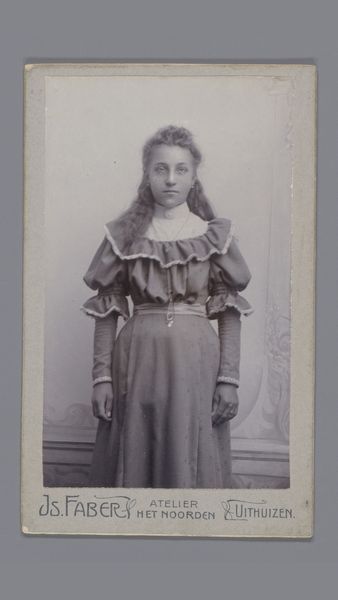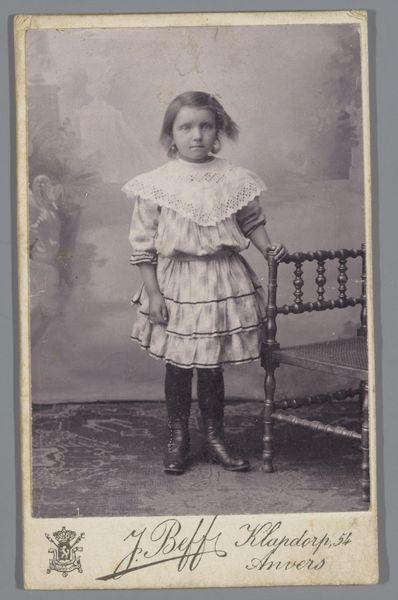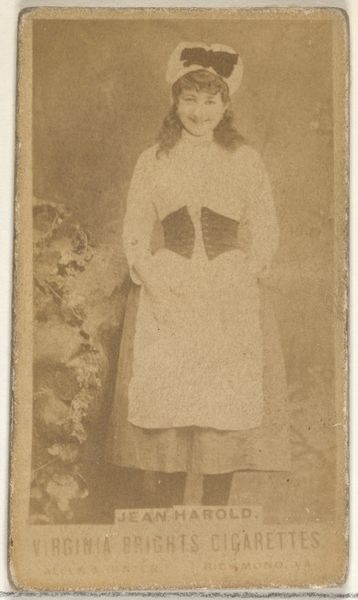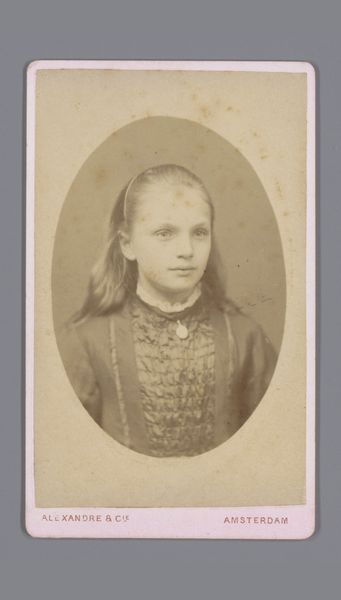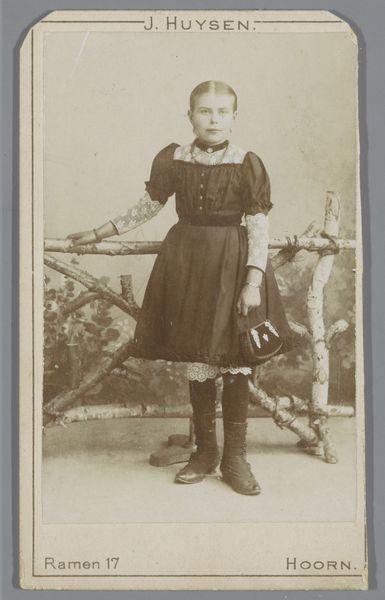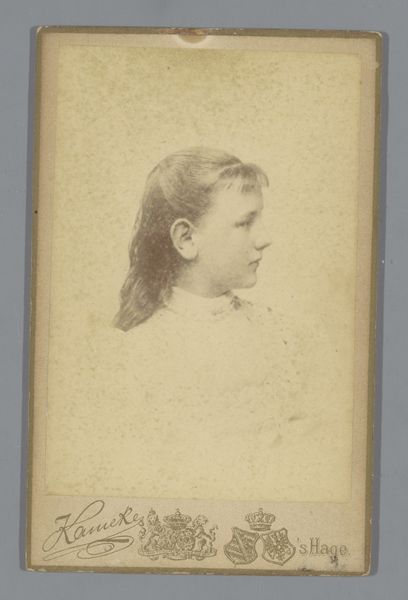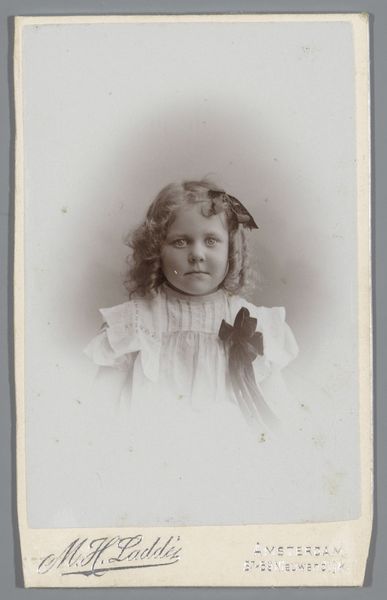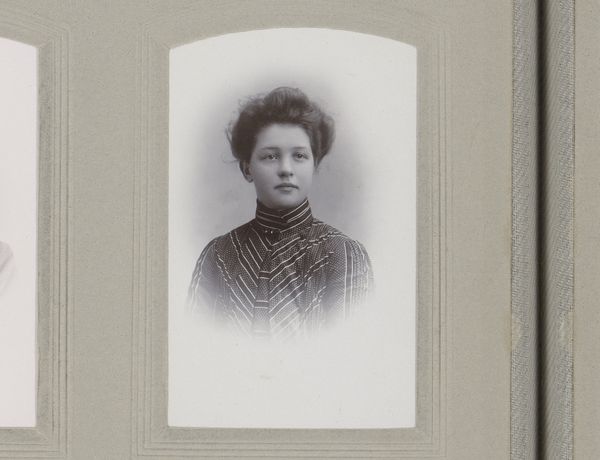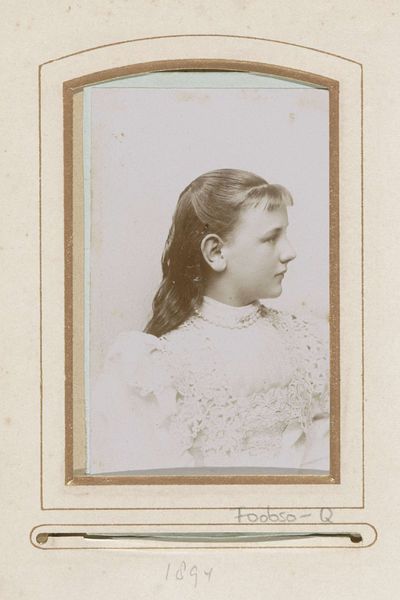
photography, gelatin-silver-print
#
portrait
#
photography
#
gelatin-silver-print
#
realism
Dimensions: height 105 mm, width 64 mm
Copyright: Rijks Museum: Open Domain
Editor: Here we have "Portrait of an Unknown Girl," taken sometime between 1900 and 1914, a gelatin silver print by F. Mertens. It's quite striking, a little haunting even. What can you tell me about it? Curator: Well, immediately, I consider the material. Gelatin silver prints like this one became standardized during this period, indicative of industrialized photography. Mertens's Paris studio suggests a market driven by the expanding middle class and the rise of portraiture as accessible commodity. Editor: So, not fine art, necessarily, but almost like a product? Curator: Exactly. Think about the labour involved: the photographer, the studio assistants, even the girl, part of a system. Consider also the social ritual of posing for such a portrait, the clothing she is wearing - indicative of a specific social class and aspirations to appear proper. The smooth surface, uniform tone, it is about conveying respectability, conforming to the social norms of the period. Do you think that changes our reading of it as a piece of realism? Editor: That's really interesting. I hadn't considered the economic aspect, only its representational qualities. So the studio, the photographic process, is central to interpreting this image. I’ll have to remember to investigate that moving forward. Thanks. Curator: My pleasure. Understanding art's making unlocks deeper readings of even seemingly straightforward portraits like this one. It reframes the portrait away from only individual subjectivity to collective industrial experience.
Comments
No comments
Be the first to comment and join the conversation on the ultimate creative platform.

